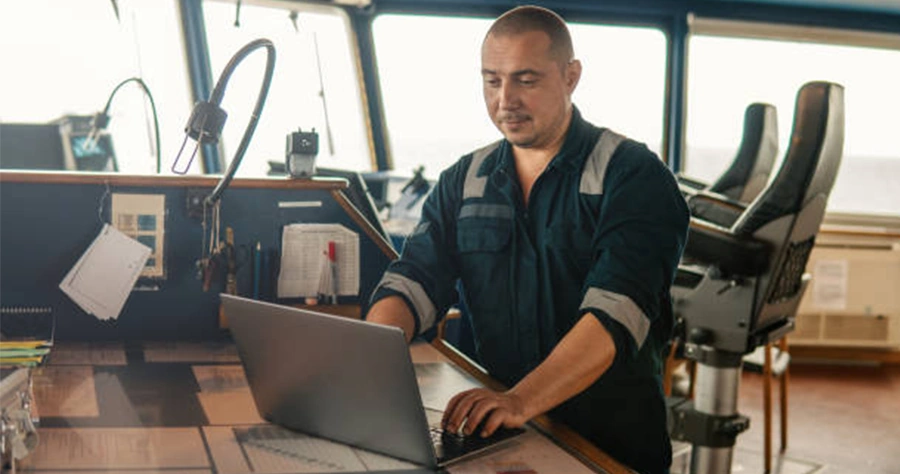How low latency connectivity will transform applications and user experience onboard ships
Digitalisation in the maritime industry has traditionally been impeded by the inability to use many of the applications available to shore-based users. New satellite constellations in Low Earth Orbit (LEO) offer an opportunity to experience faster bandwidth and lower latency to a range of users, delivering better visibility of vessel operations, enhanced voyage planning and improved safety.

Low latency connectivity is particularly important for applications that require real-time data transfer and processing. As shipping continues with its digital transformation, it can begin to take advantage of new ways of working made possible by adding new available networks supplementing the existing mix of networks with lower latency and higher bandwidth.
Examples of applications onboard vessels that will benefit from low latency connectivity include:
- Navigation systems: Next generation navigation systems are moving from unconnected assets towards networked systems with integration between critical tools such as radar and Electronic Chart Display and Information Systems (ECDIS) and back of bridge support tools for voyage planning and execution. Low latency connectivity enables better sharing of navigation data and situational awareness, extending to live video and monitoring of vessel position.
- Remote monitoring and control: Monitoring and even controlling systems such as propulsion, ballast water management and the status of cargo during the voyage benefit from real-time data to help shoreside teams make better informed decisions. Low latency connectivity will allow these systems to receive data and respond more quickly, improving efficiency and reducing the risk of costly downtime.
- Video conferencing and collaboration: Low latency connectivity will enable the regular use of video conferencing and collaboration tools, such as Teams, Skype and Zoom, which shipboard teams want to use but may have been too unreliable in practice. Enabling better communication with shore-based teams, suppliers or customers, crew members will have better access to safety, operational and vessel performance information.
- Training and education: Low latency connectivity will allow crew members to access interactive and immersive training and education resources, including online courses and certification programs, helping to improve their skills and knowledge. Rather than downloading material to be studied offline, crews can receive training on regulatory updates, safety information and skills for equipment onboard using streaming services connecting them and colleagues to shore-based providers.
- Health and safety: Shipping has for many years sought better solutions to supporting crew health and welfare while onboard ship. Low latency connectivity can be used to support the increased use of telemedicine and remote health monitoring applications with doctors in direct touch with patients. Using the same video capability would enable crew to receive counselling and advice to support their mental health and wellness.
These are just a few examples of the many applications onboard vessels that are enabled and supported by low latency connectivity. In a recently published use case, our partner OneWeb explains how high speed, low latency connectivity at sea can deliver a truly ‘office at sea’ environment, for real-time logistics and reliable video calls. Click here to read ‘The Connected Bridge’.
With advances in satellite technology and the increasing availability of high-speed, low latency satellite networks, the maritime industry is becoming better connected and able to use a wider variety of applications to further digitalise their operations.

About the Author
Knut Natvig is VP Corporate Press & PR at Marlink and has worked in the maritime industry for over 20 years
